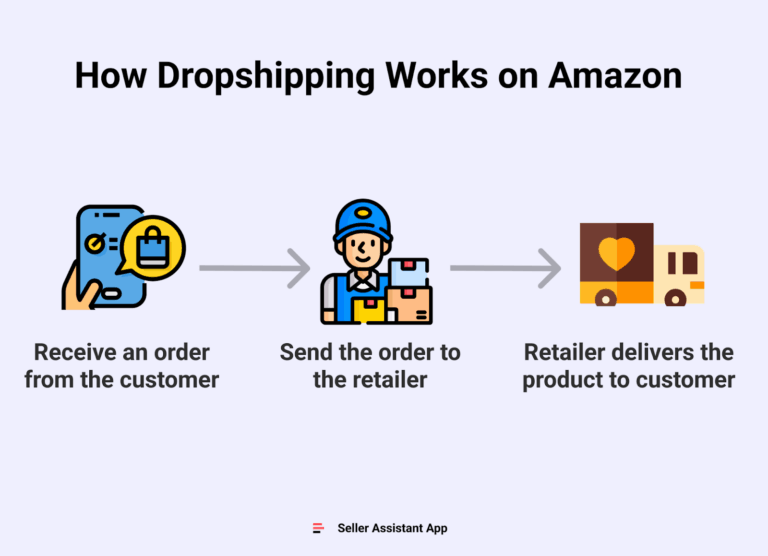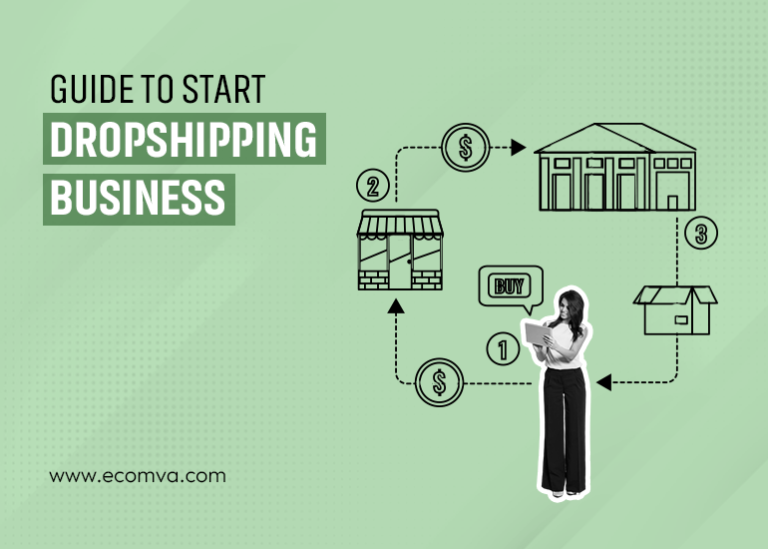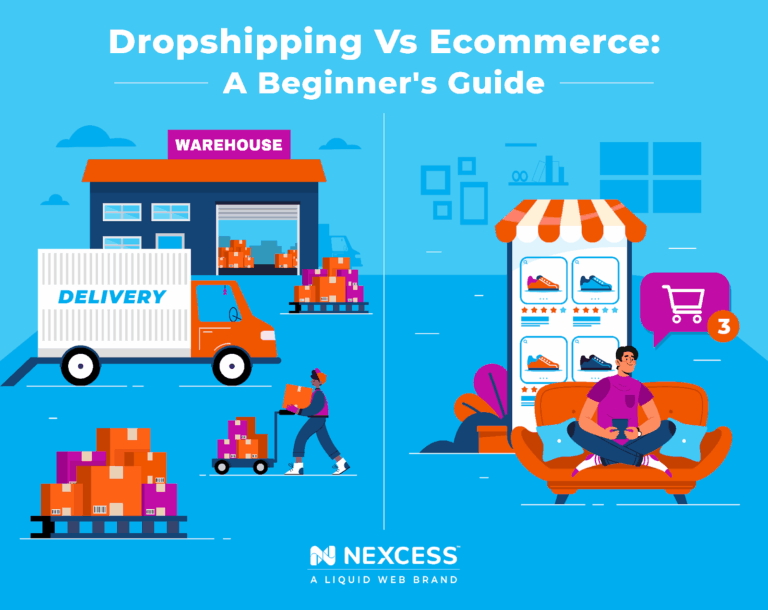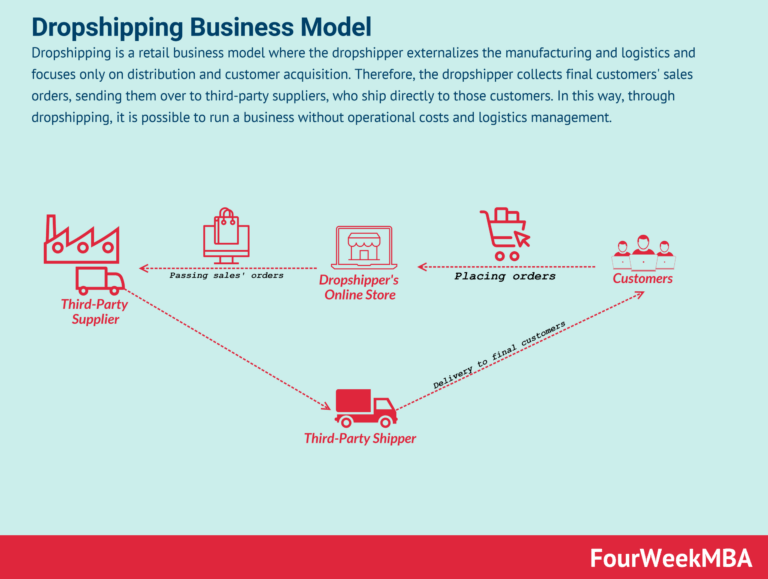How to Start Dropshipping in 2025 (A Beginner’s Guide)
Your Complete Guide to dropshipping custom apparel
Welcome to Your Entrepreneurial Journey
Congratulations on taking the first step toward starting your own business! The ambition to create something meaningful and profitable is a commendable pursuit, and you’re not alone in this journey. Many aspiring entrepreneurs, just like you, are discovering the world of e-commerce and the incredible opportunities it offers. One of the most accessible and rewarding ways to dive into this realm is through dropshipping, particularly in the vibrant niche of custom apparel.
So, what exactly is dropshipping? In its simplest form, dropshipping is a retail fulfillment method where you don’t need to hold any inventory. Instead, when a customer makes a purchase from your online store, you buy the item from a third party (like a manufacturer or supplier) who then ships it directly to your customer. This means you can focus on marketing and customer service without the burden of upfront inventory costs. The appeal is clear: with minimal startup costs and the flexibility to run your business from anywhere, dropshipping is an ideal solution for those looking to launch an online store with limited risk.
This guide will serve as your complete roadmap to successfully navigating the world of dropshipping custom apparel. We’ll cover everything from selecting the right products that resonate with your target audience, to leveraging powerful e-commerce platforms for seamless integration. You’ll learn how to create compelling designs that captivate customers, set up your online store effectively, and implement marketing strategies that drive traffic and sales. Moreover, we’ll explore best practices for customer service and fulfillment to ensure that every transaction is a positive experience for your buyers.
As you embark on this exciting venture, remember that every successful entrepreneur started with a dream. With the right guidance and a clear strategy, you too can turn your aspirations into reality. Embrace the journey ahead with confidence, and know that each step you take brings you closer to achieving your entrepreneurial goals. Let’s get started on this path to success together!
What You’ll Learn In This Guide
- Your Complete Guide to dropshipping custom apparel
- How Does Dropshipping Actually Work? A Step-by-Step Breakdown
- The Pros and Cons of Dropshipping: Is It Right for You?
- Step 1: Finding a Profitable Niche and Winning Products
- Step 2: Choosing the Right Dropshipping Suppliers
- Step 3: Building Your Online Store
- Step 4: Marketing Your Dropshipping Business to Get Sales
- Common Mistakes to Avoid as a Beginner
- Frequently Asked Questions (FAQs) about dropshipping custom apparel
- Conclusion: Your Next Steps to Launching Your Business
- Important Disclaimer
How Does Dropshipping Actually Work? A Step-by-Step Breakdown
Understanding the Dropshipping Process
Starting a dropshipping business can feel overwhelming, but breaking it down into manageable steps can simplify the process. Here’s a clear, step-by-step breakdown of how dropshipping works, especially in the realm of custom apparel.
- Customer Places an Order on Your Online Store
-
Imagine your online store as a digital storefront where potential customers browse through your unique custom apparel offerings. When a customer decides to make a purchase, they select a product—like a custom t-shirt featuring their favorite design—and add it to their cart. This action signals the beginning of the dropshipping process.
-
You Receive the Payment
-
Once the customer completes their purchase, the transaction is processed through your payment gateway. The customer pays the retail price you’ve set for the product, which typically includes your markup over the supplier’s base price. For instance, if your supplier charges $15 for a t-shirt and you sell it for $25, you earn a profit of $10. This is your revenue, and it’s crucial to ensure that your pricing strategy covers costs while remaining attractive to customers.
-
You Forward the Order to Your Supplier
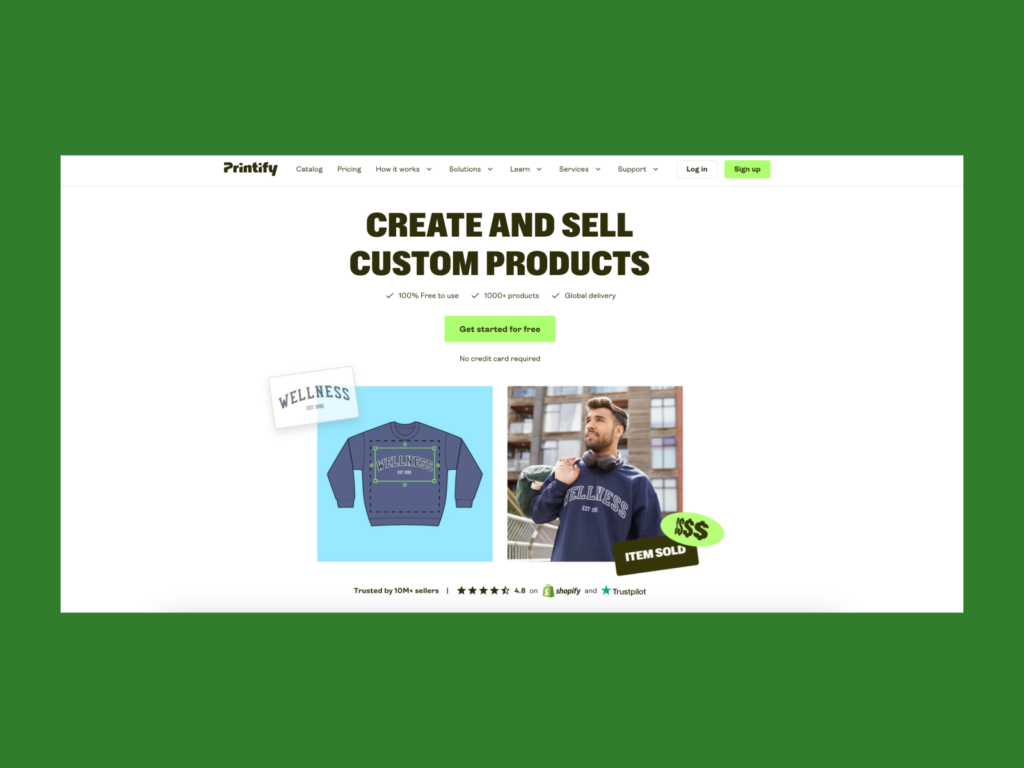
-
After receiving the payment, your next step is to notify your supplier about the order. This can usually be done through an automated integration between your e-commerce platform (like Shopify or Etsy) and the supplier’s system. You’ll provide the supplier with the customer’s shipping details and confirm the product specifications. This step is vital as it ensures that the right item is produced and shipped directly to the customer.
-
The Supplier Ships the Product Directly to the Customer
- Here’s where the magic happens. The supplier takes over the fulfillment process—they print, package, and ship the product directly to your customer. The beauty of dropshipping is that you don’t need to handle the inventory or shipping logistics. The supplier becomes your behind-the-scenes partner, ensuring that the product reaches the customer while you focus on marketing and customer engagement.
The Flow of Money and Goods
To visualize the flow of money and goods in dropshipping, think of yourself as a middleman or a digital storefront. Here’s how it works:
- Customer ➔ You ➔ Supplier ➔ Customer
- The customer pays you, and you then pay the supplier the wholesale price for the item. The difference between what the customer pays and what you pay the supplier is your profit margin.
Analogy for Clarity
Consider this analogy: Think of yourself as a restaurant owner who doesn’t cook the meals. Instead, you curate a menu of dishes from various chefs. When a customer orders a meal, you take their order and send it to the chef. The chef prepares the meal and delivers it directly to the customer. You earn money by charging the customer more than what you pay the chef for the meal. In this scenario, your role is to attract customers, manage orders, and ensure satisfaction—all while the chefs handle the cooking.
Final Thoughts
Dropshipping custom apparel allows you to start an online business with minimal investment and risk. By understanding each step of the process, you can streamline your operations and focus on building your brand. Always remember that while the supplier handles fulfillment, your main responsibility is to market your products effectively and provide excellent customer service. Embrace the journey, and soon you’ll see your efforts turn into a thriving business!
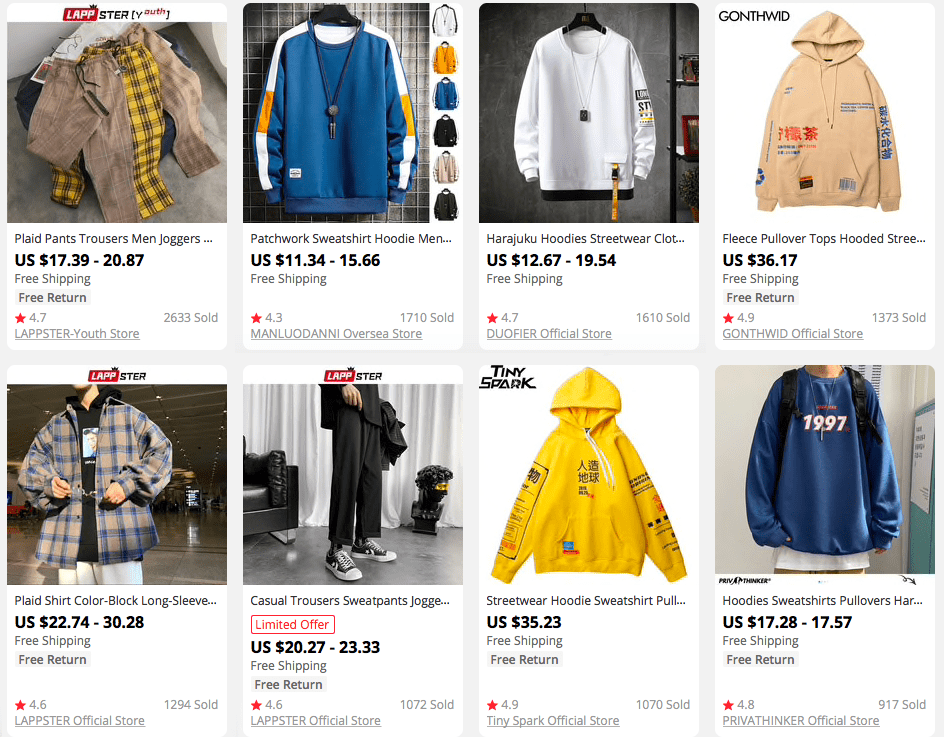
The Pros and Cons of Dropshipping: Is It Right for You?
Advantages and Challenges of Dropshipping Custom Apparel
| Advantages of Dropshipping (Pros) | Challenges of Dropshipping (Cons) |
|---|---|
| Low Financial Risk | Low Profit Margins |
| No need for large upfront inventory investment. | Margins can be thin, especially in competitive niches. |
| Easy to Start | High Competition |
| Minimal technical expertise is required to launch. | Many sellers in the same space, making it hard to stand out. |
| Flexibility and Scalability | Dependence on Suppliers |
| Easily scale your business as demand grows. | Quality and reliability issues can arise with suppliers. |
| Wide Product Range | Limited Control Over Branding |
| Access to various custom apparel products without holding stock. | Third-party fulfillment can dilute your brand identity. |
| Global Reach | Customer Service Challenges |
| Ability to sell to customers worldwide. | Handling returns and inquiries can be complex. |
| Test New Products Easily | Shipping Complexities |
| Quickly assess market trends without large investments. | Longer shipping times can affect customer satisfaction. |
| No Physical Space Required | Inventory and Order Management |
| Operate from anywhere with an internet connection. | Keeping track of orders can become cumbersome. |
Exploring the Advantages of Dropshipping
One of the most compelling reasons to consider dropshipping, particularly in the custom apparel space, is the low financial risk involved. Entrepreneurs can launch their stores without the burden of investing heavily in inventory upfront. This allows you to focus your resources on marketing and customer acquisition rather than on stock management. With platforms that integrate seamlessly with e-commerce sites like Shopify or Etsy, you can begin selling quickly and with minimal financial commitment.
The flexibility and scalability that dropshipping offers are also significant advantages. As trends in custom apparel can change rapidly, dropshipping allows you to adapt your product offerings without the need for large inventory adjustments. You can easily introduce new designs and products based on customer feedback and market demands, ensuring that your store remains relevant and appealing. This adaptability is particularly crucial for those entering the fast-paced fashion and apparel industry.
Furthermore, dropshipping opens up a wide product range to explore. You can offer a variety of custom apparel options—from t-shirts to hoodies—without worrying about manufacturing constraints. This access enables you to cater to diverse customer preferences and niches, enhancing your potential market reach.
Addressing the Challenges of Dropshipping
Despite its many advantages, dropshipping does come with its share of challenges. The low profit margins associated with dropshipping are a significant concern. Because many sellers are competing for the same customers, it’s common to see prices driven down, leading to less room for profit. This aspect makes it essential to be strategic about your pricing and marketing to ensure that you can still achieve a sustainable income.
Another challenge is the high competition within the dropshipping space. With numerous businesses vying for customer attention, especially in the custom apparel market, standing out can be a daunting task. To overcome this, you’ll need to develop a strong brand identity and marketing strategy that resonates with your target audience. Focusing on unique designs or specific niches can help differentiate your offerings.

Additionally, your dependence on suppliers can introduce risks that may affect your business. The quality and reliability of your suppliers are crucial for maintaining customer satisfaction. Issues such as delayed shipments or subpar product quality can reflect poorly on your business, even if they are out of your control. It’s vital to establish strong relationships with reputable suppliers and have contingency plans in place to address potential issues.
Lastly, customer service challenges can arise in a dropshipping model. Handling returns, exchanges, and customer inquiries can become complicated since you do not directly handle the products. This situation can lead to longer resolution times and customer dissatisfaction if not managed properly. Implementing clear communication strategies and policies can help mitigate these challenges.
Conclusion
Dropshipping custom apparel offers a compelling entry point for aspiring entrepreneurs, especially those looking to minimize financial risk and explore a wide range of products. However, the challenges of low profit margins, high competition, and reliance on suppliers require careful consideration and strategic planning. By understanding both the advantages and challenges, you can make an informed decision about whether dropshipping is the right fit for your business aspirations.
Step 1: Finding a Profitable Niche and Winning Products
What Makes a Good Niche?
Finding a profitable niche is the cornerstone of a successful dropshipping business, particularly in the custom apparel sector. A good niche should be:
-
Passion-Driven: Choose a niche that resonates with your interests or hobbies. When you are passionate about your products, your marketing efforts will feel more authentic and engaging.
-
Market Demand: Look for niches with a steady demand. Utilize tools like Google Trends to assess the popularity of certain keywords over time. A niche that has consistent interest is more likely to yield long-term profitability.
-
Competition Analysis: While competition can indicate a healthy market, too much competition can make it difficult to break in. Use platforms like SEMrush or Ahrefs to analyze competitors’ traffic and keywords. Aim for a niche with moderate competition where you can differentiate yourself.
-
Potential for Customization: Since you’re focusing on custom apparel, select a niche that allows for creative designs. This could be anything from fitness apparel for a specific type of workout to eco-friendly clothing for environmentally conscious consumers.
-
Target Audience: Identify a specific target audience. The more defined your audience, the easier it will be to tailor your marketing strategies and product offerings to their preferences and needs.

How to Brainstorm Niche Ideas
Once you understand what makes a good niche, it’s time to brainstorm niche ideas. Here are some effective strategies:
-
Leverage Your Interests: Start by listing your hobbies, interests, and experiences. Consider how these can translate into a niche. For instance, if you love yoga, you might explore yoga apparel with unique designs.
-
Online Communities: Participate in forums and social media groups related to apparel and fashion. Sites like Reddit, Facebook Groups, and niche forums can provide insights into what potential customers are discussing and what gaps you could fill.
-
Keyword Research: Use keyword research tools like Ubersuggest or Google Keyword Planner to discover trending topics and search terms. Look for keywords related to custom apparel that have decent search volume but low competition.
-
Competitor Analysis: Review what successful competitors are doing. Analyze their product offerings, customer engagement strategies, and marketing approaches. Identify gaps in their offerings that you could fill.
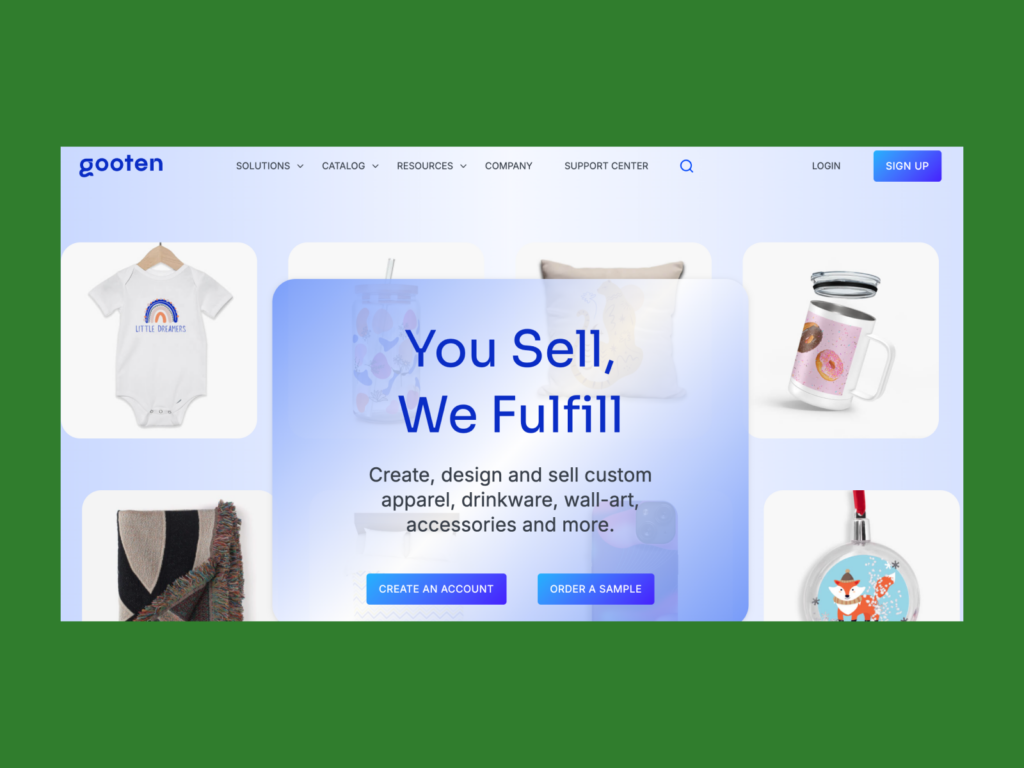
-
Seasonal Trends: Keep an eye on seasonal trends and events. Custom apparel that caters to specific holidays, events, or seasons can be a lucrative niche. For example, consider designing apparel for Pride Month, Halloween, or sports events.
Validating Your Niche
Once you have a niche idea, it’s crucial to validate it before diving in. Here’s how to do that:
-
Surveys and Feedback: Create surveys using tools like SurveyMonkey or Google Forms to gather feedback from potential customers. Ask about their preferences, pain points, and willingness to purchase custom apparel in your niche.
-
Social Media Engagement: Utilize platforms like Instagram or TikTok to gauge interest. Post mock designs or concepts and monitor engagement through likes, shares, and comments. This can provide a good indication of market interest.
-
Test Products: Consider running a small test campaign with a limited product range. Use platforms like Etsy or Shopify to sell a few items and assess sales performance. This will give you real-world data on customer interest and purchasing behavior.
-
Analyze Trends: Use Google Trends or social media trend analysis tools to track the popularity of your niche. Look for upward trends in search volume or mentions on social media.
-
Sales Data from Competitors: If possible, analyze the sales data of competitors. Tools like Jungle Scout can provide insights into product sales on Amazon, giving you an idea of what is working in your niche.
Methods for Finding Winning Products
Now that you have validated your niche, it’s time to find winning products. Here are actionable methods to help you identify high-potential items:
-
Supplier Marketplaces: Explore supplier marketplaces like Printful, Art of Where, or Contrado. These platforms often have trending products or bestsellers sections that can inspire your product selection.
-
Social Media Trends: Use tools like BuzzSumo or Sprout Social to identify trending topics and products on social media. Look for posts that are getting a lot of engagement in your niche.
-
Price Point Consideration: Choose products with a price point that allows for a healthy profit margin (typically 20-40% markup). Products that are too cheap may not yield significant profits, while overly expensive items can deter customers.
-
Unique Selling Proposition (USP): Identify products that are not easily found in local stores. Custom designs, eco-friendly materials, or unique fabrics can set your offerings apart. Your USP is critical in a competitive market.
-
Problem-Solving Products: Focus on products that solve specific problems for your target audience. For instance, if you’re targeting fitness enthusiasts, consider moisture-wicking or UV-protective apparel that meets their needs.
-
Customer Reviews and Feedback: Analyze customer reviews on existing products to identify what customers love or dislike. This can guide you in selecting products that have the features and quality customers desire.
-
Use Product Research Tools: Leverage product research tools like Oberlo or AliExpress to identify trending items in the dropshipping community. These platforms provide insights into what is currently popular and selling well.
Conclusion
Finding a profitable niche and winning products in the custom apparel dropshipping market is a combination of creativity, research, and validation. By following these steps, you can set yourself up for success. Remember, the key is to stay adaptable and responsive to market changes. As you embark on your dropshipping journey, keep your target audience in mind, and always be open to feedback and innovation. With persistence and strategic planning, you can turn your passion into a thriving online business.
Step 2: Choosing the Right Dropshipping Suppliers
Understanding Dropshipping Suppliers
Choosing the right dropshipping supplier is critical to the success of your custom apparel business. The supplier you select will influence your product quality, shipping times, customer service, and ultimately, your brand reputation. Here, we’ll explore some of the leading platforms for dropshipping custom apparel, including AliExpress, CJ Dropshipping, and USA-based suppliers, along with their pros and cons. Additionally, we’ll provide a comprehensive checklist to help you evaluate potential suppliers effectively.
AliExpress
Overview
AliExpress is one of the largest online retail platforms, offering a vast array of products, including custom apparel. Many entrepreneurs start here due to the low prices and extensive product selection.
Pros
- Diverse Product Range: You can find thousands of custom apparel options, from t-shirts to hoodies, which allows for a wide variety in your product offerings.
- Low Prices: Competitive pricing makes it easier to set attractive retail prices, helping you attract customers.
- No Upfront Costs: You only pay for the items after you make sales, minimizing financial risk.
- Global Shipping: Many suppliers offer international shipping, expanding your potential customer base.
Cons
- Quality Control: The quality of products can vary significantly between suppliers. It’s essential to order samples to ensure they meet your standards.
- Long Shipping Times: Depending on the supplier’s location, shipping can take weeks, which might lead to customer dissatisfaction.
- Limited Customer Support: Communication can be challenging, as many suppliers operate in different time zones and languages.
CJ Dropshipping
Overview
CJ Dropshipping is a popular choice for dropshippers looking for a more curated selection of products. It offers various services, including order fulfillment and product sourcing.
Pros
- Quality Assurance: CJ has a more stringent vetting process for suppliers, which can lead to higher quality products.
- Faster Shipping: They have warehouses in various locations, including the USA, which can reduce shipping times significantly.
- Custom Branding Options: CJ allows you to customize packaging and labels, helping you build your brand identity.
- Integrated Services: The platform provides additional services such as product photography and listing optimization.
Cons
- Higher Costs: Prices can be higher than those found on platforms like AliExpress, which may affect your profit margins.
- Learning Curve: The platform can be complex for beginners, requiring some time to learn how to navigate effectively.
- Limited Product Range: While they offer many products, the selection may not be as extensive as AliExpress.
USA-Based Suppliers
Overview
Working with USA-based suppliers can provide significant advantages, particularly concerning shipping times and customer service.
Pros
- Faster Shipping: Domestic shipping typically means shorter delivery times, which can enhance customer satisfaction.
- Easier Communication: Working within the same time zone often leads to better communication and support.
- Higher Product Quality: Many USA-based suppliers maintain high manufacturing standards, which can improve product quality.
Cons
- Higher Prices: Products from USA suppliers can be more expensive than those from international suppliers, which might limit your pricing flexibility.
- Limited Variety: While there are many quality suppliers, the range of custom apparel options may not be as vast as international platforms.
- Minimum Order Requirements: Some suppliers may require minimum order quantities, which can pose a challenge for new businesses.
What to Look for in a Good Supplier
When evaluating potential dropshipping suppliers, consider the following checklist to ensure you choose the best partner for your business:
- Communication:
- Are they responsive to inquiries?
-
Do they provide clear and timely updates on orders?
-
Shipping Times:
- What are their average shipping times?
-
Do they offer expedited shipping options?
-
Product Quality:
- Can you order samples to assess product quality?
-
Do they have quality control measures in place?
-
Return Policies:
- What is their return policy for defective items?
-
Are there clear guidelines for handling returns and exchanges?
-
Pricing Structure:
- What are their base prices, and how do they compare to other suppliers?
-
Are there any hidden fees (e.g., shipping, handling)?
-
Product Range:
- Do they offer a wide variety of custom apparel options?
-
Are there opportunities for unique or niche products?
-
Integration Capabilities:
- Can they easily integrate with your e-commerce platform (e.g., Shopify, WooCommerce)?
-
Do they offer automated order fulfillment processes?
-
Reviews and Testimonials:
- What do other dropshippers say about their experiences?
-
Are there any consistent complaints or praises in reviews?
-
Branding Options:
- Do they allow for custom branding on packaging and labels?
-
How flexible are they in terms of product customization?
-
Sustainability:
- Are their products eco-friendly or made from sustainable materials?
- Do they have ethical manufacturing practices?
Conclusion
Choosing the right dropshipping supplier is a crucial step in building a successful custom apparel business. By evaluating platforms like AliExpress, CJ Dropshipping, and USA-based suppliers, you can find the best fit for your needs. Remember to use the checklist provided to assess potential suppliers carefully. This approach will help you ensure that you partner with a supplier that meets your quality, pricing, and shipping expectations, paving the way for a successful dropshipping venture. Your journey into the world of custom apparel dropshipping can be rewarding, so take the time to make informed decisions!
Step 3: Building Your Online Store
Getting Started with Shopify for Your Dropshipping Store
Creating an online store for your dropshipping custom apparel business can feel overwhelming, but with the right guidance, you can set up a professional and functional storefront in no time. Shopify stands out as one of the most popular platforms for e-commerce, offering a user-friendly interface and robust features tailored for entrepreneurs like you. Let’s break down the essential steps to get your online store up and running.
1. Choosing a Shopify Plan
First things first: you need to select a Shopify plan that suits your business needs. Shopify offers several pricing tiers, including Basic, Shopify, and Advanced plans. For beginners, the Basic plan is a great starting point, offering all the essential features you need, such as:
- An online store with unlimited products.
- 24/7 customer support.
- A blog to connect with your audience.
- Sales channels including social media and online marketplaces.
As your business grows, you can always upgrade to a more advanced plan to unlock additional features like advanced reporting and lower transaction fees.
2. Picking a Theme
Next, you’ll want to choose a theme that aligns with your brand and appeals to your target audience. Shopify provides a variety of free and paid themes that you can customize to fit your vision. When selecting a theme, consider the following:
- Design Aesthetics: Look for a theme that reflects the style of your custom apparel. If you’re selling edgy streetwear, opt for a bold and modern design. For more casual wear, a minimalist theme might be a better fit.
- Mobile Responsiveness: Ensure the theme is mobile-friendly, as a significant portion of customers shop via mobile devices.
- Customization Options: Choose a theme that allows you to easily customize colors, fonts, and layouts without needing advanced coding skills.
Once you’ve selected a theme, you can easily customize it from the Shopify dashboard to reflect your brand identity.
3. Setting Up Essential Pages
Creating a professional online store involves more than just product listings. You need to establish trust with your customers by including essential pages:
- About Us: Share your story, mission, and values. Let customers know what makes your brand unique and why they should choose your products.
- Contact: Make it easy for customers to reach you. Include a contact form, email address, and possibly a phone number.
- Policies: Clearly outline your policies regarding shipping, returns, and privacy. This transparency builds trust and can help mitigate disputes.
You can find templates for these pages within Shopify, making it easy to create polished, professional content.
4. Installing Key Apps
To streamline your dropshipping operations, you’ll want to install essential apps that enhance your store’s functionality. Here are a couple of must-have apps:
- DSers or CJ Dropshipping: These apps allow you to import products from suppliers directly into your Shopify store and manage your orders efficiently. They also automate tasks like inventory management and order fulfillment, saving you time and reducing errors.
- Printful: If you’re focusing on custom apparel, Printful is a great option for print-on-demand services. You can integrate it with Shopify to create and sell your designs without worrying about inventory.
To install these apps, simply go to the Shopify App Store, search for the app, and follow the installation prompts.
5. Setting Up Payment Gateways
To start receiving payments, you need to set up payment gateways. Shopify supports various payment options, including:
- Shopify Payments: This is the easiest option, as it’s built into Shopify and offers competitive transaction fees.
- PayPal: Adding PayPal as a payment option can boost your conversion rates, as many customers prefer it for online transactions.
- Stripe: Another popular option that allows credit card payments.
To set up your payment gateways, navigate to the “Settings” section of your Shopify dashboard, click on “Payments,” and follow the instructions to enable your preferred payment options.
Exploring WooCommerce as an Alternative
While Shopify is a fantastic choice for beginners, you might also consider WooCommerce if you’re looking for a more customizable solution. WooCommerce is a plugin for WordPress that transforms your site into a fully functional online store. It offers extensive customization options and can be a cost-effective solution if you already have a WordPress site. However, it may require more technical knowledge to set up and manage compared to Shopify.
Conclusion
Building your online store for dropshipping custom apparel doesn’t have to be daunting. By following these steps, you’ll be well on your way to creating a professional storefront that attracts customers and drives sales. Remember, the key to success in e-commerce is not just setting up the store, but also continuously optimizing it and engaging with your customers. Stay motivated, keep learning, and enjoy the journey of entrepreneurship!
Step 4: Marketing Your Dropshipping Business to Get Sales
Social Media Marketing (TikTok & Instagram)
Social media is a powerful tool for promoting your dropshipping business, especially platforms like TikTok and Instagram, which cater to visual content and younger demographics. Here’s how to leverage these platforms effectively:
1. Create Engaging Content
- Tip: Focus on visually appealing content that showcases your custom apparel. Use lifestyle images, videos of people wearing your products, and behind-the-scenes footage of your design process.
- Example: If you sell custom t-shirts, create short videos of customers unboxing their orders or styling the shirts in different ways. Use trending music to enhance the appeal.
2. Use Hashtags Strategically
- Tip: Research and use relevant hashtags to increase the visibility of your posts. Combine popular hashtags with niche ones to reach a broader audience.
- Example: Use hashtags like
#CustomApparel,#FashionInspo, and#StreetwearStyle, alongside trending tags like#OOTD(Outfit of the Day) or seasonal tags such as#FallFashion.
3. Collaborate with Influencers
- Tip: Partner with micro-influencers who resonate with your brand and have an engaged following. They can help promote your products authentically.
- Example: Reach out to influencers who focus on fashion or lifestyle and offer them free samples of your apparel in exchange for a shoutout or review.
4. Run Contests and Giveaways
- Tip: Organize contests that encourage user-generated content. Ask followers to post photos wearing your apparel with a specific hashtag for a chance to win a prize.
- Example: A “Best Styled Outfit” contest where participants submit photos of themselves in your custom apparel can create buzz and increase engagement.
5. Utilize Stories and Reels
- Tip: Take advantage of Instagram Stories and TikTok Reels to share quick updates, promotions, or product highlights. These formats are great for reaching a broader audience.
- Example: Use Stories to showcase a new collection launch with a countdown sticker, or create a fun Reel highlighting different ways to wear a specific item.
Paid Advertising (Facebook/Instagram Ads)
Investing in paid advertising can significantly boost your visibility and sales. Here’s how to get started:
1. Define Your Target Audience
- Tip: Use Facebook’s audience targeting features to define your ideal customers based on demographics, interests, and behaviors.
- Example: If you’re selling custom apparel for fitness enthusiasts, target users who follow fitness pages, engage with health-related content, or belong to fitness groups.
2. Create Eye-Catching Ads
- Tip: Design visually appealing ads that highlight the unique aspects of your products. Use high-quality images and clear calls to action.
- Example: An ad featuring a model wearing your apparel in a vibrant outdoor setting can attract attention. Include a call-to-action like “Shop Now” or “Limited Time Offer!”
3. Test Different Ad Formats
- Tip: Experiment with various ad formats, such as carousel ads, video ads, or collection ads to see which performs best.
- Example: A carousel ad showcasing multiple products allows users to swipe through different apparel options, increasing engagement.
4. Use Retargeting Strategies
- Tip: Implement retargeting ads to reach users who have previously visited your website but did not make a purchase.
- Example: Show ads featuring items they viewed or similar products to remind them of their interest and encourage them to return.
5. Monitor and Optimize Campaigns
- Tip: Regularly check your ad performance metrics and adjust your strategy based on what works. Focus on metrics like click-through rates and conversion rates.
- Example: If an ad featuring a particular design has a high click-through rate but low conversions, consider tweaking the landing page to better align with the ad.
Search Engine Optimization (SEO)
Optimizing your dropshipping store for search engines can drive organic traffic without the need for paid ads. Here’s how to get started:
1. Keyword Research
- Tip: Identify keywords relevant to your products using tools like Google Keyword Planner or Ubersuggest. Focus on long-tail keywords that indicate purchase intent.
- Example: Instead of targeting a broad term like “t-shirts,” aim for more specific phrases like “custom graphic t-shirts for women.”
2. Optimize Product Descriptions
- Tip: Write unique and compelling product descriptions that incorporate your target keywords naturally. Avoid duplicate content from suppliers.
- Example: Instead of a generic description, highlight the unique features of your custom apparel, such as fabric quality, design inspiration, and care instructions.
3. Improve Site Speed and Mobile Responsiveness
- Tip: Ensure your website loads quickly and is mobile-friendly. Google prioritizes fast-loading sites in search rankings.
- Example: Use tools like Google PageSpeed Insights to analyze your site’s speed and identify areas for improvement.
4. Build Backlinks
- Tip: Collaborate with bloggers and websites in the fashion niche to create guest posts or features that link back to your site.
- Example: Write a guest post about the importance of custom apparel on a fashion blog and include a link to your store.
5. Regularly Update Content
- Tip: Keep your website fresh by regularly adding new content, such as blog posts about trends in custom apparel, styling tips, or behind-the-scenes stories.
- Example: Start a blog section where you share insights on how to style your custom t-shirts or the design process behind your products.
Email Marketing
Email marketing is an effective way to nurture leads and convert them into customers. Here’s how to implement a successful email marketing strategy:
1. Build an Email List
- Tip: Use pop-ups or lead magnets, such as discounts or exclusive content, to encourage visitors to sign up for your newsletter.
- Example: Offer a 10% discount on the first purchase for subscribers, prompting them to provide their email addresses.
2. Segment Your Audience
- Tip: Segment your email list based on customer behavior or preferences to send targeted campaigns that resonate with each group.
- Example: Create segments for first-time buyers, repeat customers, and those who have abandoned their carts, tailoring your messages accordingly.
3. Craft Compelling Newsletters
- Tip: Design visually appealing newsletters that showcase your latest products, promotions, and engaging content. Keep the tone friendly and conversational.
- Example: Feature a “Product of the Month” section that highlights a specific item with styling tips and customer testimonials.
4. Automate Your Campaigns
- Tip: Set up automated email sequences for welcome emails, abandoned cart reminders, and post-purchase follow-ups to nurture leads efficiently.
- Example: If a customer adds an item to their cart but doesn’t complete the purchase, send them a reminder email with a discount code to encourage them to finalize the order.
5. Analyze and Optimize
- Tip: Regularly review your email campaign metrics, such as open rates and click-through rates, to identify what works and what doesn’t.
- Example: If you notice that emails sent on weekends have higher open rates, adjust your sending schedule accordingly.
By implementing these marketing strategies, you can effectively promote your dropshipping custom apparel business, drive traffic to your store, and ultimately increase sales. Remember, consistency is key; regularly evaluate your efforts and adapt your strategies based on performance. Good luck on your entrepreneurial journey!
Common Mistakes to Avoid as a Beginner
1. Choosing a Bad Niche
One of the most common pitfalls for beginners is selecting a niche that is either oversaturated or lacks demand. A niche that is too competitive can make it difficult to stand out, while a niche with low interest may result in poor sales.
Solution: Conduct thorough market research using tools like Google Trends, social media insights, and competitor analysis. Look for niches that have a growing audience and where you can add unique value. Consider your own passions or expertise as potential niche ideas, as this can help you stay motivated and engaged.
2. Not Testing Products
Many new dropshippers rush to launch their stores without testing the quality of their products. This can lead to customer dissatisfaction and returns, which can tarnish your brand’s reputation.
Solution: Always order samples of your products before selling them. This allows you to assess the quality, fit, and overall customer experience. Use the samples to create high-quality product images and descriptions that accurately reflect what customers can expect.
3. Poor Customer Service
Customer service is crucial in e-commerce, yet many beginners underestimate its importance. Negative customer experiences can lead to bad reviews, returns, and loss of repeat business.
Solution: Set up clear communication channels and response protocols. Use email automation tools to ensure prompt replies, and consider implementing a live chat feature on your website. Always strive to exceed customer expectations by being responsive, empathetic, and proactive in resolving issues.
4. Ignoring Shipping Times
Shipping times can significantly impact customer satisfaction. Many beginners fail to clearly communicate shipping expectations, leading to frustration and distrust from customers.
Solution: Be transparent about shipping times on your website. Clearly state the estimated delivery times for each product, and consider offering multiple shipping options. If you’re using suppliers with long shipping times, manage customer expectations by sending order updates and tracking information.
5. Unrealistic Profit Expectations
New entrepreneurs often have inflated expectations regarding profit margins and sales volume. This can lead to disappointment and premature business failure.
Solution: Educate yourself on the typical profit margins in the dropshipping industry, which often range from 20% to 40% of the base price. Create a financial plan that includes all potential costs, such as product costs, shipping fees, and marketing expenses, to better understand your actual profit potential.
6. Overlooking Branding
Many beginners focus too much on products and neglect the importance of branding. A weak or inconsistent brand can make it hard to build trust and loyalty among customers.
Solution: Develop a strong brand identity that includes a memorable logo, cohesive color schemes, and a clear brand voice. Ensure that your branding is consistent across all platforms, from your website to your social media accounts. This helps create a professional image and builds trust with your audience.
7. Skipping Marketing Strategies
A common mistake is assuming that simply having a dropshipping store will lead to sales. Many beginners overlook the necessity of effective marketing strategies to drive traffic and convert visitors into customers.
Solution: Invest time in learning about digital marketing techniques such as SEO, content marketing, social media marketing, and paid advertising. Start with a few channels that resonate with your target audience and expand from there. Regularly analyze your marketing efforts to see what works best and refine your strategy accordingly.
8. Failing to Optimize for Mobile
With a significant portion of online shopping happening on mobile devices, many beginners make the mistake of not optimizing their websites for mobile users.
Solution: Choose a responsive website design that ensures your store looks good and functions well on all devices. Test your website on various screen sizes and make adjustments as needed. A seamless mobile experience can lead to higher conversions and customer satisfaction.
9. Ignoring Analytics
Many newcomers overlook the power of analytics, missing out on valuable insights that can drive business growth. Without data, it’s difficult to understand customer behavior and make informed decisions.
Solution: Use tools like Google Analytics to track website traffic, conversion rates, and customer demographics. Regularly review this data to identify trends, optimize your product offerings, and improve marketing strategies. Data-driven decisions can significantly enhance your business performance.
10. Not Building an Email List
Failing to build an email list is a common mistake that can limit your ability to engage with customers and drive repeat sales. Many beginners focus solely on social media for customer outreach.
Solution: Start building your email list from day one. Offer incentives such as discounts or exclusive content to encourage sign-ups. Use email marketing to nurture relationships with your customers, promote new products, and share valuable content that keeps them engaged with your brand.
By avoiding these common mistakes and implementing the suggested solutions, you’ll be well on your way to building a successful dropshipping custom apparel business. Stay committed, keep learning, and adapt as you grow!
Frequently Asked Questions (FAQs) about dropshipping custom apparel
1. What is dropshipping custom apparel?
Dropshipping custom apparel is a retail fulfillment method where you sell clothing items that are produced and shipped by a third-party supplier. Instead of holding inventory, you create designs and list them on your online store. When a customer places an order, the supplier prints and ships the item directly to the customer, allowing you to focus on marketing and sales without the hassle of inventory management.
2. How much money do I need to start a dropshipping custom apparel business?
You can start a dropshipping custom apparel business with a minimal investment, often as low as $100 to $500. Key expenses include setting up an e-commerce platform (like Shopify or Etsy), creating designs (which can be done for free or at a low cost using design software), and marketing your products. As your business grows, you can reinvest profits to expand your offerings.
3. Do I need to register a company to start dropshipping?
While it’s not legally required to register a business when you first start dropshipping, it’s advisable to do so as your business grows. Registering your business can provide legal protection, make you eligible for tax benefits, and enhance your credibility with customers and suppliers. Check local regulations to ensure compliance.
4. How do I handle returns and exchanges?
Handling returns and exchanges in dropshipping can be tricky since you don’t physically handle the products. Most suppliers have their return policies, which you should clearly communicate to your customers. Establish a clear return policy on your website, and collaborate with your supplier to manage any returns effectively. Always strive for excellent customer service to build trust.
5. What are the best platforms for dropshipping custom apparel?
Popular platforms for dropshipping custom apparel include Shopify, Etsy, and WooCommerce. Each offers unique features like customizable storefronts, payment processing, and integration with dropshipping suppliers. Choose one that aligns with your business goals, technical skills, and desired level of customization.
6. How do I choose a reliable supplier for custom apparel?
When selecting a supplier, consider factors such as product quality, shipping times, pricing, and customer service. Look for suppliers with positive reviews, a good track record, and a user-friendly interface. It’s a great idea to order samples to assess the quality before you start selling to your customers.
7. Can I create my own designs for custom apparel?
Absolutely! One of the key advantages of dropshipping custom apparel is the ability to create unique designs. You can use graphic design software like Adobe Illustrator or free tools like Canva to create your designs. Ensure your designs meet the supplier’s specifications for printing to avoid issues.
8. How do I market my dropshipping custom apparel?
Marketing is crucial for driving traffic to your store. Utilize social media platforms like Instagram and Pinterest to showcase your designs and engage with potential customers. Consider influencer partnerships, email marketing, and paid advertising to reach a broader audience. Content marketing, like blog posts and videos, can also help establish your brand.
9. What are the most common challenges in dropshipping custom apparel?
Common challenges include managing customer expectations regarding shipping times, ensuring product quality, and dealing with competition. To mitigate these challenges, maintain clear communication with your customers, work with reputable suppliers, and continuously innovate your product offerings to stand out in the market.
10. How do I scale my dropshipping custom apparel business?
To scale your business, focus on expanding your product range, improving your marketing strategies, and optimizing your customer service. Analyze sales data to understand customer preferences and adjust your offerings accordingly. Consider automating processes with tools and software to save time and increase efficiency, allowing you to focus on growth strategies.
Conclusion: Your Next Steps to Launching Your Business
Your Path to Launching a Successful Dropshipping Business
Starting your dropshipping journey in the custom apparel market is an exciting endeavor, but it’s crucial to approach it with the right mindset and preparation. Here’s a step-by-step guide to help you get started:
-
Research and Select Your Niche: Identify a specific niche within custom apparel that resonates with you and has market demand. Consider factors such as trends, target audience, and competition.
-
Choose Reliable Suppliers: Partner with reputable dropshipping suppliers like Art of Where, Printful, or Contrado. Evaluate their product quality, shipping times, and integration capabilities with your e-commerce platform.
-
Set Up Your Online Store: Create a user-friendly online store using platforms like Shopify, Etsy, or Squarespace. Ensure your website is visually appealing, mobile-friendly, and optimized for conversions.
-
Design Your Products: Create unique and eye-catching designs that reflect your brand identity. Utilize design tools to visualize your products and create samples to gauge quality.
-
Develop a Marketing Strategy: Plan how you will attract customers. Utilize social media, content marketing, and email campaigns to build your brand presence and drive traffic to your store.
-
Launch and Iterate: Once everything is in place, launch your store! Monitor performance, gather feedback, and be prepared to make adjustments to improve your offerings and customer experience.
Remember, dropshipping is not a get-rich-quick scheme; it requires dedication, ongoing learning, and effort. Success comes from building a brand that resonates with your audience and continuously improving your processes.
Take the First Step Today!
Don’t let fear or uncertainty hold you back. Every successful entrepreneur started somewhere. Embrace the journey of learning and growth, and take that first step toward launching your custom apparel business. Your dreams are within reach—start today!
Important Disclaimer
⚠️ Important Disclaimer
The information provided in this guide is for educational purposes only. Starting a business involves risks, and success is not guaranteed. Please conduct your own thorough research and consider consulting with financial and legal professionals before making any business decisions.

